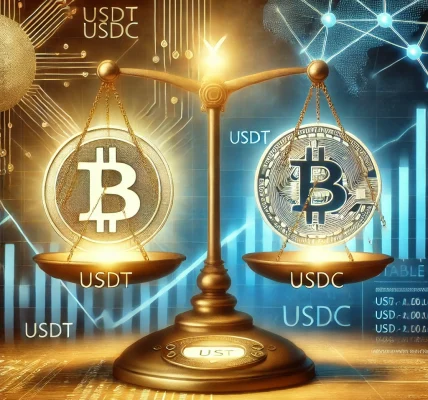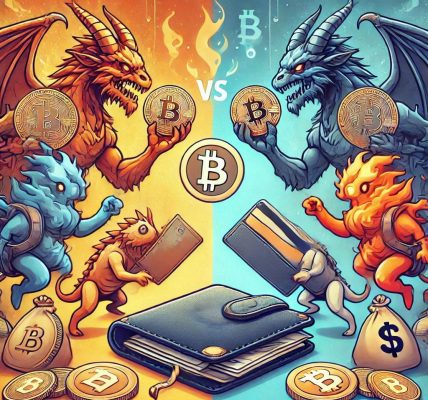Introduction
Play-to-earn (P2E) gaming has transformed the digital landscape by merging the worlds of entertainment and decentralized finance. Since the meteoric rise of blockchain-based games, players have been able to earn cryptocurrency and digital assets while enjoying interactive gameplay. However, as the industry evolves, many are left wondering if P2E games in 2025 still offer profitable opportunities. This comprehensive review will examine the current state of play-to-earn games, key factors affecting profitability, notable examples, and tips for maximizing your earnings in this dynamic ecosystem.
Disclaimer: This article is for informational purposes only and does not constitute financial or legal advice. Please perform your own research and consult professionals before making any investment or gaming decisions.
The Evolution of Play-to-Earn Gaming
A Brief History
The concept of play-to-earn emerged as a response to traditional gaming models, where players typically spent money without receiving any tangible return. Early blockchain games like CryptoKitties and Axie Infinity set the stage by introducing tokenized assets and digital ownership. Players were rewarded with tokens that could be traded on decentralized exchanges, providing an alternative revenue stream.
Over the past few years, the play-to-earn model has matured significantly. Developers have incorporated innovative mechanics, robust economies, and community governance into their platforms. As a result, the gaming ecosystem now supports a diverse range of experiences, from collectible-based games to competitive eSports.
Why P2E Games Became Popular
- Decentralized Ownership:
Players now own in-game assets as non-fungible tokens (NFTs), granting them real-world value and tradability. - Economic Incentives:
The ability to earn tokens that can appreciate in value has created a powerful incentive for both casual and professional gamers. - Community Engagement:
Many P2E platforms offer governance tokens, giving players a say in the future direction of the game. - Global Accessibility:
Blockchain technology has democratized access to gaming, enabling anyone with an internet connection to participate and earn rewards.
Current Market Trends in P2E Gaming (2025)
The play-to-earn market in 2025 is more diversified than ever before. Several key trends are shaping the landscape:
1. Maturation of In-Game Economies
Modern P2E games now feature sophisticated in-game economies with complex supply-and-demand dynamics. Developers are implementing features such as token staking, yield farming, and liquidity mining to enhance the profitability of their ecosystems. As a result, the economic incentives for players have become more sustainable over time.
2. Increased Adoption of Cross-Chain Technology
Blockchain interoperability has become a significant focus, with many P2E games integrating cross-chain solutions. This allows players to use assets across multiple platforms, increasing liquidity and utility. Cross-chain bridges are enabling seamless transfers of tokens, thereby broadening the scope of what players can do with their earnings.
3. Enhanced Security and Compliance
With regulatory scrutiny increasing globally, many P2E platforms have bolstered their security measures and enhanced compliance frameworks. Enhanced KYC (Know Your Customer) and AML (Anti-Money Laundering) protocols are becoming standard, ensuring a more secure and transparent gaming environment.
4. Diversification Beyond Gaming
Some platforms are branching out by integrating additional features like social media, virtual real estate, and NFT marketplaces. This diversification not only enriches the user experience but also creates multiple revenue streams for players. The concept of the “metaverse” is gaining traction, where gaming is just one component of a broader digital ecosystem.
Top Play-to-Earn Games to Watch in 2025
While profitability varies based on market conditions and player engagement, several games have stood out as promising in 2025. Below is a detailed look at some of the top contenders:
1. Axie Infinity 2.0
Overview:
A successor to the groundbreaking Axie Infinity, this version brings enhanced graphics, deeper gameplay mechanics, and a more robust economic model. The game continues to reward players with Smooth Love Potion (SLP) and Axie Infinity Shards (AXS), tokens that have real-world value.
Why It’s Profitable:
- Strong Community Support: Axie Infinity boasts one of the largest gaming communities, ensuring high liquidity in its token market.
- Improved Game Mechanics: Enhanced gameplay keeps the player base engaged, which is crucial for sustaining a profitable in-game economy.
- Continuous Updates: Regular updates and community-driven governance ensure the game evolves with market demands.
Challenges:
- High initial investment for new players.
- Market saturation and volatility.
2. Decentraland
Overview:
Decentraland is not just a game—it’s a virtual world where players can buy, sell, and develop virtual real estate using MANA, its native token. Players earn through various activities, from virtual events to digital art exhibitions.
Why It’s Profitable:
- Virtual Real Estate: Owning digital land in a popular metaverse can generate significant returns through leasing and resale.
- Diverse Revenue Streams: Income isn’t limited to gameplay; social events, digital commerce, and NFT art sales contribute to overall profitability.
- Growing Ecosystem: The expanding metaverse ensures continuous user engagement and increasing asset value.
Challenges:
- Dependent on the overall adoption of the metaverse concept.
- Regulatory uncertainties regarding digital asset ownership.
3. Illuvium
Overview:
Illuvium is an open-world RPG that combines immersive gameplay with blockchain technology. Players capture and battle creatures known as Illuvials, earning tokens in the process.
Why It’s Profitable:
- High-Quality Gameplay: Its AAA game quality attracts both gamers and investors.
- NFT Integration: Illuvials are tokenized, ensuring that in-game assets have real-world value.
- Competitive Ecosystem: Regular tournaments and competitive events incentivize active participation.
Challenges:
- Competition from other high-quality blockchain games.
- Balancing game economy with player engagement.
4. The Sandbox
Overview:
The Sandbox is a virtual world that combines gaming with creative expression. Players build, share, and monetize gaming experiences using SAND tokens.
Why It’s Profitable:
- User-Generated Content: The ability to create and monetize content drives consistent platform engagement.
- Diverse Revenue Streams: Income opportunities include virtual real estate, asset trading, and participation in community events.
- Strong Partnerships: Collaborations with major brands and content creators boost platform credibility and user growth.
Challenges:
- Dependence on continuous content creation.
- High competition in the metaverse space.
5. Sorare
Overview:
Sorare blends fantasy sports with blockchain, allowing players to collect, trade, and compete with digital player cards. These cards are NFTs representing real-world athletes.
Why It’s Profitable:
- Real-World Value: Player cards have value both in the game and in the real-world sports market.
- Limited Supply: Scarcity of high-value cards can drive up their price.
- Strong Fan Base: The popularity of football (soccer) ensures a broad and engaged audience.
Challenges:
- Market value can be highly volatile, influenced by sports performance.
- Limited to football and dependent on licensing deals.
Factors Influencing Profitability in Play-to-Earn Games
1. Tokenomics and In-Game Economy
The design of a game’s token economy is crucial. Games with sound tokenomics ensure that rewards are sustainable and that the supply of tokens is managed effectively. Look for platforms that offer mechanisms like token burns, staking rewards, and liquidity pools to maintain token value.
2. User Base and Community Engagement
A large, active user base is a strong indicator of a game’s profitability. High player engagement leads to better liquidity and more vibrant marketplaces for NFTs and tokens. Community-driven governance also plays a role in maintaining the game’s evolution.
3. Initial Investment and Entry Barriers
Many play-to-earn games require a significant upfront investment—whether it’s purchasing NFTs or in-game items. Profitability often hinges on the ability to recoup these initial costs. Games with lower entry barriers tend to attract more players, but may offer lower APYs.
4. Market Volatility
The profitability of play-to-earn games is inherently tied to the broader crypto market. Market downturns can dramatically affect token values, while bull markets can enhance returns. Diversifying your portfolio across multiple games can help mitigate risk.
5. Regulatory Environment
As governments around the world continue to scrutinize crypto assets, regulatory changes can impact the profitability of play-to-earn games. Platforms that proactively implement robust security and compliance measures are better positioned to weather regulatory challenges.
6. Game Longevity and Developer Commitment
Long-term profitability is also linked to how committed developers are to updating and expanding the game. Continuous improvements, community engagement, and adaptation to market trends are essential for maintaining a profitable ecosystem over time.
Tips for Maximizing Profit in Play-to-Earn Games
Diversify Your Investments
Rather than putting all your resources into a single game, consider diversifying your investments across multiple platforms. This strategy can help you balance potential returns against market volatility.
Stay Informed
Keep up-to-date with industry news, developer updates, and market trends. Being well-informed will help you anticipate changes in tokenomics, game mechanics, or regulatory shifts that could impact your earnings.
Engage with the Community
Join forums, social media groups, and official Discord channels related to your favorite play-to-earn games. Engaging with the community can provide insights, tips, and early information about upcoming updates or events.
Use Reliable Wallets and Secure Storage
Protecting your assets is crucial. Ensure you use reputable wallets (preferably hardware wallets for large holdings) and enable all available security features such as two-factor authentication.
Monitor Your Investments Regularly
The dynamic nature of the crypto market means that profitability can change rapidly. Regularly review your investments, track token performance, and be ready to adjust your strategy if necessary.
Understand the Risks
Play-to-earn gaming comes with risks such as market volatility, potential scams, and technological vulnerabilities. Only invest what you can afford to lose and consider consulting with a financial advisor if needed.
Conclusion
The play-to-earn model continues to evolve in 2025, offering gamers innovative ways to earn cryptocurrency and digital assets. Games like Axie Infinity 2.0, Decentraland, Illuvium, The Sandbox, and Sorare illustrate the diverse opportunities available in the P2E ecosystem. However, profitability is not guaranteed and depends on several factors, including tokenomics, community engagement, market conditions, and regulatory environments.
By staying informed, diversifying investments, and engaging actively with the community, players can maximize their earnings while navigating the risks associated with this dynamic industry. The future of play-to-earn gaming looks promising, but as with any investment, careful research and strategic planning are key to success.
Disclaimer: The content in this article is for informational purposes only and should not be taken as financial or legal advice. Always conduct thorough research and consult with professionals before making any investment decisions in the cryptocurrency or gaming sectors.




